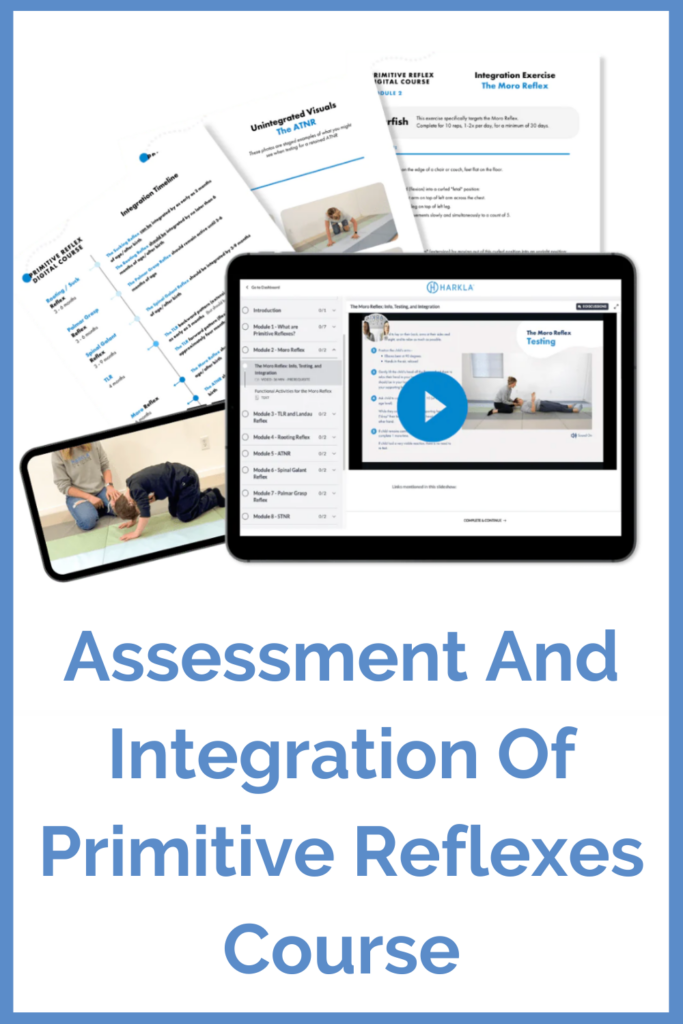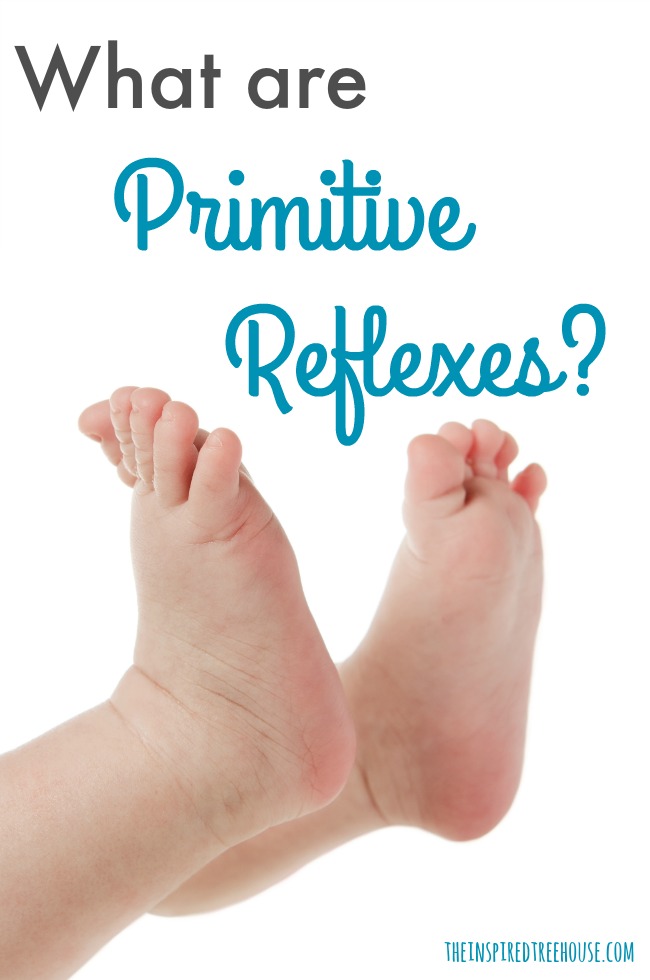Learn the basics about the primitive reflexes kids are born with and why they’re so important.
*This post contains affiliate links. Read more.
What are primitive reflexes?
Newborns are cute and snuggly but they’re pretty darn smart too! Equipped with some amazing, although involuntary, movements from Mother Nature, babies enter the world ready to suck on a breast or bottle and grasp their mama’s finger.
These innate movements are called newborn or primitive reflexes and as part of our series on child development terms, we are going to explore them so you know what to make of those seemingly jerky, out of control movements your baby might be making!

Assessment & Integration of Primitive Reflexes Course
Learn how to, screen for and integrate retained primitive reflexes to help kids improve motor, social, and daily functioning skills!
Find out how to use fun, therapeutic, and functional activities to promote integration of retained reflexes.
*This course has been approved by the AOTA for continuing education.
CLICK HERE TO LEARN MORE ABOUT THE COURSE!
Primitive Reflexes
Below, you’ll read more about each of the reflexes and what they look like in babies and children before they are integrated. At the bottom of this post is a free printable on the topic of primitive reflexes.
Rooting Reflex
This reflex is produced by stroking an infant’s cheek, which causes the baby to turn his head toward the touch and open his mouth for food. This reflex will disappear around 9 months of age.
Moro Reflex
This is that crazy dance-like movement you might see an infant do on the floor. First, the baby extends her arms, arches her back and then extends her legs. After all of that, she flexes everything almost like she is ready to curl up in a ball. This is the reflex that happens if a baby’s head suddenly falls back into extension if you forget to hold it up! It disappears around 3-6 months of age.
Grasping Reflex
When you stroke an infant’s palm, the reflexive response is a fisted, tight grip – so strong that it can allow a baby to carry his own weight! This is measured by the pediatrician when he has your infant lying on her back, allows your baby to grasp his finger, and gradually lifts her from the table using her own grasp. This reflex will integrate around 2-3 months of age.
Swimming Reflex
Yep, if you place your baby’s face in water, she will demonstrate well-coordinated swimming movements. Crazy, huh? This is a primitive reflex, meaning that it was present even when your baby was in utero. It will disappear around 6 months of age.
Asymmetrical Tonic Neck Reflex
This is the “fencer” position that you often see a baby assume when his head is turned to one side while he is on his back. The arm and leg on the side that his face is turned toward extend while the opposite arm and leg flex. It will go away between 2-7 months of age.
Babinski Reflex
This is a reflex that you will see your pediatrician test for as well. He may stroke the bottom of your baby’s foot to ensure that her foot twists in and her toes fan out in response. It will drop away around 6-9 months of age.
Primitive Walking Reflex
This one speaks for itself. It involves a series of stepping motions of your infant’s legs when you hold him under the arms and his feet contact the floor. It will go away around 4-8 weeks of age.
Check out this video for examples of each of these reflexes.
Want to learn more about infant and toddler development? Check out our Infant & Toddler Handbook and our Developmental Milestones Handout Pack!
Retained Primitive Reflexes
As all of these reflexes mature and disappear, your child continuously develops more coordinated voluntary movements. With repeated practice, these movements will become more and more precise and complex, leading to strong posture and balance.
Some children demonstrate signs of some of these reflexes beyond the age when they would typically be expected to integrate. These are referred to as retained primitive reflexes, and there is some evidence suggesting that this can lead to learning difficulties and problems with motor development, among other developmental concerns.
Learn More About Primitive Reflexes
Interested in learning more about the significant impacts of retained primitive reflexes, how to assess the various reflexes, and how to promote primitive reflex integration? Be sure to check out this great digital course from Harkla!

Latest posts by Lauren Drobnjak (see all)
- End of the Year Gifts for Therapists - April 14, 2024
- Playful Therapy Posters to Spruce Up Your Room - March 30, 2024
- How to Help a Baby Crawl & Creative Crawling Patterns We See in Therapy - March 19, 2024

